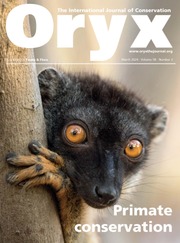Scalesia retroflexa is a shrub, up to 5 m tall, with hairy stems and leaves, endemic to the Galápagos Islands. It is one of the 15 species of Scalesia, endemic to 11 islands. It shows intermediate morphological traits with Scalesia affinis, suggesting potential hybrid ancestry. Scalesia retroflexa is restricted to the rocky south-east coast of Santa Cruz Island. It was assessed as Vulnerable on the IUCN Red List in 1998, but was categorized as Critically Endangered in Ecuador’s Red Book of Endemic Plants in 2011 because of its small population and habitat degradation by invasive goats.
The first collections were in 1868, and there were 20th-century herbarium records, mostly from the south-east coast. After a collection in 1998, no new specimens were collected until 2022. In 1999, 29 individuals were fenced at Punta Núñez, but no collections were made and their status remained unmonitored for over 2 decades. In May 2022, we confirmed this population persists, documenting 23 adults and seedlings. Goat activity was observed in the area, and the original fence had collapsed. In 2023, a fence was installed around an area of 2,500 m2. Tetrazolium viability tests showed low germination (6.7% in 2023 and 3.5% in 2024), indicating major restoration challenges as a result of limited seed viability.
In November 2024, we confirmed a second population at El Garrapatero Beach, a site known to have harboured S. retroflexa historically, but where no individuals had been recorded for 29 years. We tagged 16 individuals, collected seeds and deposited herbarium specimens at the Charles Darwin Research Station. Goat scat confirmed ongoing threats to this population.
Both sites are characterized by proximity to the shoreline, low elevation and rocky terrain, often in association with species such as Opuntia echios, Lantana peduncularis, Castela galapageia, Scutia spicata, Croton scouleri, Maytenus orbicularis, Lycium minimum and Bursera graveolens. Historical records describe other populations in locations with similar ecological conditions. The total number of individuals remains unknown, and a broader survey of the south-east coast of Santa Cruz is planned for 2025, to clarify the species’ current distribution and status. Conservation efforts include propagation and habitat restoration to support species survival.
This project was supported by the COmOn Foundation and Stanley Smith Horticultural Trust, under permit PC-44-24. This is contribution number 2726 of the Charles Darwin Foundation for the Galápagos Islands.

Photograph of Scalesia retroflexa showing characteristic capitula and leaves. Photo: Paúl Mayorga/Charles Darwin Foundation, 2024.

